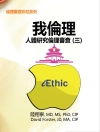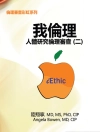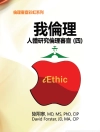This new edition of The Strategic Application of Information
Technology in Health Care Organizations offers a peerless guide for
health care leaders to understand information technology (IT)
strategic planning and implementation. Filled with illustrative
case studies, the book explores the link between overall strategy
and information technology strategy. It discusses organizational
capabilities, such as change management, that have an impact on an
organization’s overall IT effectiveness, and a wide range of IT
strategy issues. The book covers emerging trends such as
personalized medicine; service-oriented architecture; the
ramification of changes in care delivery models, and the IT
strategies necessary to support public health.
‘Health information technology sometimes masquerades as an end
in itself. The reality is that IT is a means to an end, an enabler
of the strategic goals of health care organizations. This volume
reminds us that shaping IT strategy and implementation to an
organization’s goals is the key to generating both economic returns
and safer care for patients. You don’t need an engineer to
understand how to use IT to advance a health care organization’s
strategic agenda. You just need to read this book.’– Jeff
Goldsmith, Ph D, president of Health Futures, Inc.
‘In this time of health care reform, nothing is more front and
center than health IT. This book is an exceptional blueprint for
the future, with a focus on the essential measures of success for
any system implementation.’ — Stephanie Reel, MBA, vice
provost for information technology and chief information officer,
The Johns Hopkins University
‘In this book, the authors answer the question that every health
care leader should be asking: How do we unlock the promise of
health information technology and fundamentally reshape our
industry?
This is a must-read for every person who wants to improve
American health care.’ — David Brailer, MD, Ph D, chairman of
Health Evolution Partners
Tabela de Conteúdo
Tables, Figures, and Exhibits.
Preface.
The Authors.
1: An Overview of Strategy.
Definition of Strategy.
The Need for IT Strategy.
Areas of IT Strategy.
Strategy Considerations and Conclusions.
Characteristics of Strategic Thinking.
2: Linkage of IT Strategy to Organizational Strategy.
IT Planning Objectives.
Vectors for Arriving at IT Strategy.
A Normative Approach to Developing Alignment and IT
Strategy.
Observations on IT Strategy Development.
3: The Information Technology Asset.
Asset Composition and Overview.
Application Systems.
Technical Architecture.
Data.
IT Staff.
The Chief Information Officer.
Observations on the IT Asset.
4: Information Technology-Centric Organizational Capabilities
and Characteristics.
Managing Change.
Governance.
Studies of Factors Contributing to Effective IT Use.
5: Strategy Considerations and Conclusions.
Complementary Strategies.
The Realization of IT-Enabled Value.
Strategy Evolution.
Governing Concepts.
The Competitive Value of Information Technology.
6: High Performance Medicine.
HPM Team 1: Investment in Quality and Utilization
Infrastructure.
HPM Team 2: The Patient Safety Initiative.
HPM Team 3: The Uniform High-Quality Initiative.
HPM Team 4: Disease Management Initiative.
HPM Team 5: The Trend Management Initiative.
HPM Governance and Change Management.
7: Personalized Medicine.
Partners Health Care Personalized Medicine and IT.
Framing the Strategic Response.
The Workflow Process.
The End Users.
Implementing the IT Strategy.
Enterprise IT.
Clinical Environment IT.
Research IT.
8: Service-Oriented Architecture for Electronic Health
Records.
Framing the Strategic Response.
The Potential Value of SOA.
The Challenges of SOA.
Approaching the SOA Strategy.
The SOA Strategy.
9: Health Care Reform.
New Models of Care.
Payment Reform.
National and State Health Information Technology
Initiatives.
The Effect of Health Care Reform on IT Strategy.
The Effect of Health Care Reform on the IT Asset.
The Effect of Health Care Reform on Governance.
10: Population Health.
Goals of Population Health.
Population Health and Health Care Providers.
The Effect of Population Health Interest on IT Strategy.
Disease Monitoring and Surveillance.
Chronic Disease.
Immunization Registries.
11: Synthesis of Information Technology Strategy.
IT Asset.
IT-Centric Organizational Characteristics and Capabilities.
Governing Concepts.
Complementary Strategies.
Strategy Evolution.
The Realization of IT-Enabled Value.
IT as a Way to Enhance Competitive Position.
Notes.
Glossary.
References.
Index.
Sobre o autor
John Glaser, Ph D, is chief executive officer of the Health
Systems Business Unit at Siemens and is a board member of the
National e Health Collaborative and the e Health Initiative (e HI).
Dr. Glaser was previously vice president and chief information
officer at Partners Health Care System, Inc. and also served as vice
president of information systems at Brigham and Women’s
Hospital. Dr. Glaser was the founding chairman of the College of
Healthcare Information Management Executives (CHIME) and is past
president of the Healthcare Information and Management Systems
Society (HIMSS).
Claudia Salzberg, MS, is a researcher and analyst in the
Center for Patient Safety Research and Practice and the Division of
General Medicine of Brigham and Women’s Hospital.
Currently she participates in research focused on analyzing the
impact of health information technology on healthcare overall, and
in particular patient safety, and in addition the impact of health
policy approaches on these domains.












